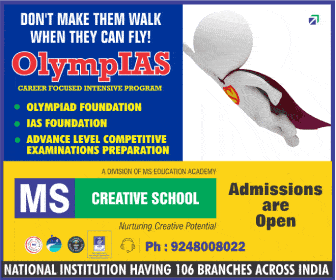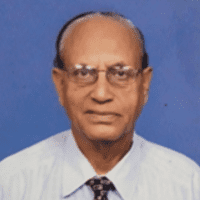[ad_1]
Among the multitude of problems that cropped up in the in wake of Indian independence, language problem was one which not only defied a solution but threatened to create a lot of confusion in the country. Hindi was recognised as the National language but to make it official language was not favoured and met with stiff resistance from many States. To make Hindi popular and easily understandable by the majority, a mixture of simple Hindi and Urdu under the name HINDUSTANI was introduced in the school curriculum, but did not last for long. Ultimately as an amicable solution to the problem, Hindi was clubbed with English and regional language and accepted as a trilingual formula for all practical purposes.
India is unique as a multilingual country, with 22 officially recognised languages. When India was ruled by muslims and mugals for centuries, Urdu mixed with Persian was used not only as official language but for all communication purposes, including teaching in madarsas (schools) by maulavies (Teachers). Thereafter, British rulers used English as official language and to a large extend as medium of instructions in schools and colleges. At present most of the States are using their regional languages along with English as official language and English to correspond with the Central Government. However, medium of instructions in schools and colleges in the States depends upon their locations, demand and availability of required facilities.
After a long gap National Education Policy (NEP) was revised and released as NEP – 2020 with drastic changes made in the existing 10+2 schooling which used to start at the age of 6 years with grade I. Now 3 years of pre- school / Anganwadi foundational learning in the age group of 3-6 years has been introduced as a part of school curriculum; although similar scheme still exists in the form of nursery/play school, K.G.1 and 2 in recognised or unrecognised private schools throughout the country. Next two years of primary school will be treated as school study of class 1 and 2 in the age group of 6-8 years. Thereafter, it is preparatory from 3-5 in the age group of 8-11 years. Finally, it is secondary of 4 years from 9-12 grades/ classes in two phases i.e. 9-10 in the first and 11-12 the second in the age group of 14-18 years. Thus the new schooling system will be 5+3+3+4 covering the age 3-18 years.

NEP 2020 emphasizes early childhood care and education (ECCE) preferably through mother tongue from age 3, extending its benefits to socio- economically disadvantageous children residing in rural or remote areas, also in Ashramshalas in tribal dominated areas by providing access in phased manners. Similar emphasis is laid on foundation literacy and numeracy i.e. reading, writing and arthematics. This policy decision is in addition to the existing right of children to free compulsory education act 2009 and is well desired; but what is desired need not always be possible, especially under the prevailing economically weak and politically surcharged atmosphere. Its implementation on a large scale in the existing huge number of public schools spread over the country, especially those in villages and remote areas involving heavy finances and man power will be a very tough task.
As indicated above the new education policy emphasises on teaching primary level education, stretchable up to 8th class and beyond, through mother tongue / regional language. No doubt primary stages of learning through mother tongue is quickly imbibed by children and helpful in accelerating progress; but it needs to be viewed in the perspective of university education and higher technical and professional courses, after the secondary school stages, where English continues as a medium of instructions. In our country teaching for technical, professional and post graduate level courses pertaining to science, is invariably through English medium.
Teachers teaching these courses often found complaining about their students’ poor communication skills in speaking and writing in English. Such observations are a regular feature among students who had their earlier education through regional languages. It is relevant to refer to the recent statement of UGC Chairman to the language issue faced by the students in institutions of higher learning. The Chairman without any hesitation and reservation asserted on universities to allow students to write examinations in local languages even if the course is offered in English medium. Appropriate necessary action to be taken for appointing required faculty, evaluators and translators to translate standard text books. He pin pointed the crucial area of focus in NEP 2020 on promotion and regular use of mother tongue and local Indian languages in education. Once the teaching, learning and assessments are done in local languages, student engagement will gradually increase leading to an increase in the success rate. This proposal appears to be quite appealing for learning purpose but it should be viewed from the angle of its practical utility and benefits in seeking jobs, both at national and International levels; or even to those desirous of seeking admissions in institutions of higher learning in advanced countries. Apart from this it will be very difficult to make arrangement for teaching, examining and evaluating in different languages by the states where students speaking different languages enrol for studies.
It is relevant to cite the example of one of the oldest Indian universities, Osmania University, established in 1919 by Mir Osman Ali Khan, the 7th Nizam of erstwhile Hyderabad Deccan State where Urdu was the medium of instructions right from primary to post graduate education, including technical and professional courses. However, English was a compulsory subject in the curriculum, maintaining its high standard. Obviously, this helped those students pursuing technical and professional courses to refer to original standard books in English even before they were translated and published. Many students even shifted to other States or travelled abroad to join universities of repute for studying through English medium. After India’s independence and merger of Hyderabad Deccan State in the Indian Union the medium of instructions in the colleges of Osmania University was changed to English.
If reviewed critically it will not be surprising to note that majority of the students in India would like to study through English medium in their own interest. Telangana Government has been quick to switch over to English as medium of instructions in all public schools throughout the State. However, a good number of private English medium schools are spread over the country to cater to the needs of those who would like to pursue their education through English language.
English has the advantage of helping us in dealings with the advanced nations of the world by avoiding delay in communicating with them. We have yet to learn a lot in technical and scientific fields from other advanced countries. Under the existing conditions, we cannot toy with the idea of replacing English at the University level either by National or regional languages. However, bilingual approach of teaching and learning as envisaged in NEP 2020 is worth trying in phase wise long duration with sincere co-operative efforts of all the concerned including States, since education is a concurrent subject.
Dr. Dhrubash Karan Mathur, Rtd. Professor, Osmania University, Former Principal, Nizam College (Autonomous)
[ad_2]
#Language #problem #higher #education #recommendations #NEP
( With inputs from www.siasat.com )


Leave a Reply